The Cupra Ateca has a unity and thoughtfulness in its design that makes it stand apart from other SUVs on the market today
The Cupra design story is an unusual one. Its origins lie within what was once called Seat Special Vehicles department – the company’s motorsport division that was established in 1971. The department changed names in 1985 to Seat Sport. 18 years later at the 2003 Barcelona Motor Show, the ‘Cupra GT’ was showcased as a concept-turned-racecar that would go on to compete in the Spanish GT Championship.
In 2018, Seat decided to position Cupra as a separate marque that operated independantly of, but with much influence from, Seat and its mother company Volkswagen. It now embodies Seat’s motorsport division as well as a team that designs Cupra-only models, of which there are currently two: the el Born and the Formentor. The marque also takes existing Seat models and tweaks them to make high-performance and high-end road-legal cars, such as the Cupra Ateca.
Unified exterior
The Ateca’s exterior design hints heavily at the sportiness of its DNA. All shapes are angular, and there is an obvious focus on keeping surfaces clean and lines uninterupted.
At the front, the two-part honeycomb grille is dissected by a narrow strip of body work with a strong line, which, at its widest points, cuts up to outline the headlights. Starting on the wheel arches as a wide shape, the lights push inwards towards and become narrower, with the upper outline slanting down to finish parallel with the top of the grille. There are two large square air intakes flanking the lower section of the grille, under which is a small textured section with ‘CUPRA’ written in embossed text. It is all very symmetrical and pleasing. There is a delibrate sense of unity.
There is little to report on at the side, apart from a bold belt line that starts at the back of the headlamps and continues to run the width of the rear. The wheel arches are prominent, resulting in the Ateca’s chunky feel and formidable stance, and the wheels themselves are 19” with machined two-tone silver and matt black alloys as standard (though the Ateca we tested came with the copper/black alloys that cost an extra £995).
This stance is emphasised at the rear, with the black bumper curling upwards to suggest a tall ride height. Four tailpipes protrude from the bumper, two at either side, screaming sportiness. Above the bumper is a thin line of matt rectangles staggered between strips of body, with the widest housing reflective surfaces. The rear lights are more simple in their shape when compared to the headlamps, but they also begin narrow as they push towards the centre of the car, drawing the eye to the Cupra badge.
Proportionally, the model does little to distinguish itself from other SUVs on the market,but a closer look finds an impressive level of detail that demands appreciation. For example, the top of the wing mirrors have a delicate textured finish similar to the honeycomb grille that sits under a layer of protective transparent plastic. There’s even ‘Seat lighting’ with an accompanying logo etched on a silver surface in the headlamps – an area that wouldn’t normally include such details, showing how the company has thought about every touch. This attention to detail on the exterior is what sets the Ateca apart, and in many cases, above, from the crowd.
Several paint options are available, with our test car finished in what Seat calls ’Rhodium Grey’. It has both a green and blue tint to it under certain light conditions. Other options include ‘Nevada White, ‘Bila White’, ‘Velvet Red’ and ’Reflex Silver’.
Simple interior
Simplicity is the name of the game inside, putting the attention firmly on the driving experience. The thick padded steering wheel has a flat bottom and the same greenish tint as the paintwork on the exterior of our test model, again adding to the sense of unity in design. The main body of the wheel with the airbag is textured by countless small squares that run diagonally, and taking centre stage in the middle is the golden Cupra logo.
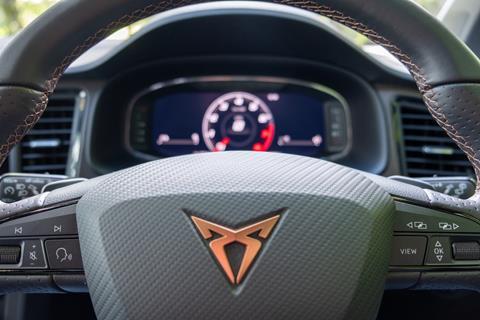
A similar squared effect is used on the soft plastic that outlines the large embedded touchscreen, the air vents, parts of the centre console and also parts of the seats. Chrome is also used to bring a dash of silver here and there, like on the small parking brake switch – showing, again, a keen attention to detail. The chrome cuts through the shades of green nicely, bringing a refreshing modernisation without detracting from the colour theme.
The bucket seats are the only busy part of the interior, with several different colours and patterns bringing a vibrancy that surprisingly does not feel out of place. A soft blueish suede material covers most of the seat, and at the top the Cupra logo is once again present, but this time it is cut into the suede. The suede material also covers half of the doors. A single line of copper stitching, the same copper tone as the optional alloys, outlines the seat edges. Very pleasing indeed!
The dash is unusual, doing away with the common layering of sections and inside taking the form of a large curved area made of plastic. It is unadorned aside from a few lines that give it a subtle shape. The embedded touchscreen is directed towards the driver, acting almost as an extension to the smaller screen behind the steering wheel. There are three dials for climate control, with a few buttons above to activate the heated seats. A fourth, larger dial on the centre console can be used to change driving modes.
Space is abundant, with plenty of room for taller occupants in both the front and back. The boot is also a decent size thanks to the height of the car, complete with fixtures that allow for attachments such as storage nets.
Driving and UX
All the details so far suggest the Ateca should be exquisite to drive, and despite being a fairly sizable, heavy SUV (kerb weight of 1,615kg), it certainly delivers. The 2.0-litre TSI engine is surprisingly quiet when first turned on and gently hums away when driving at steady speeds. However, a firm stomp on the accelerator delivers a thrilling thrust of 300PS, and when in ‘Sport’ or ‘Cupra’ mode, the dual exhausts let out a delightful spit and gurgle. Seat says the Ateca will do 0-62mph in 4.9 seconds, which is an impressive feat for an SUV (the Audi SQ2, for example, does 0-62mph in 4.8 seconds).
The engine is paired with a DSG (direct-shift gearbox), which is smooth and refined. There are also Brembo brakes available as well as a specially-tuned suspension system with front and rear shock absorption. It feels firm and highly adaptable to cornering, but also able to take on uneven surfaces when necessary.

An array of driver assistance systems provides a helping hand, with features such as front assist with autonomous emergency braking. The Ateca also has park assist, the cameras automatically guiding the steering of the car into a space. These technologies have been around for some time, but with so much focus on the power and refined driving experience, they come as a welcome surprise on the Ateca.
The graphics and resolution of the 9.2-inch touchscreen are impressive too. It is responsive and doesn’t suffer from the same delay as many other systems on the market. The Cupra logo appears when the engine is turned on. As there is a lack of physical buttons and dials on the interior, the majority of vehicle controls and settings are hidden away under one of the several menus accessed on the touchscreen, but these are easy enough to find and seem to come under the relevant categories.
Summary
SUVs are not really meant to thrill. In their very nature, they are big, sluggish and dull to look at. But the Cupra Ateca turns all of that on its head. How so? Through great design.
The unity of shapes, the careful and meticulous attention to detail via materials, and the clean minimalist approach that puts emphasis on the driver experience – it is no stroke of luck that these themes come together in the Ateca. The design team working on Cupra models has shown the rest of the world that SUVs can be exciting to drive as well as visually pleasing. Here’s to hoping the next Cupra model will be just as brilliant.































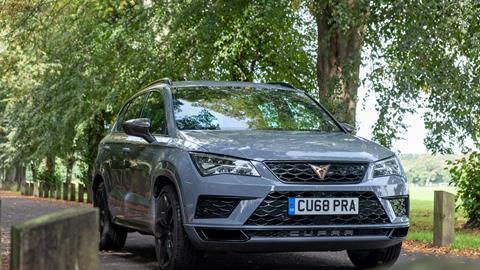
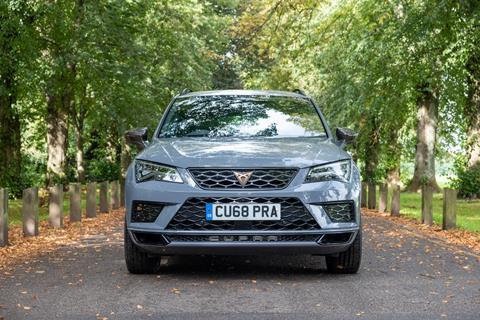
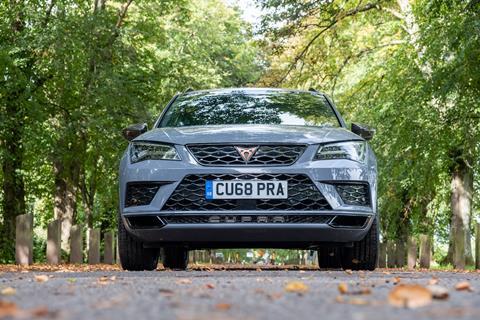
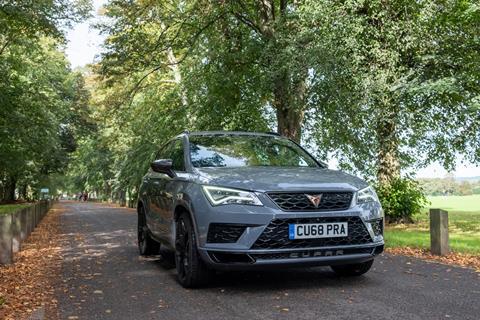

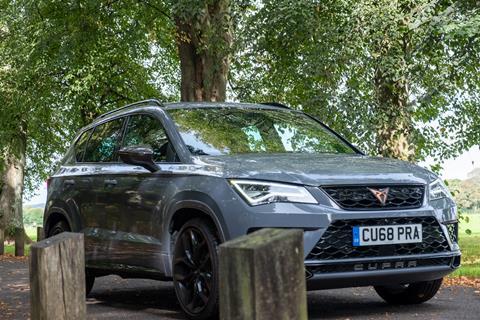
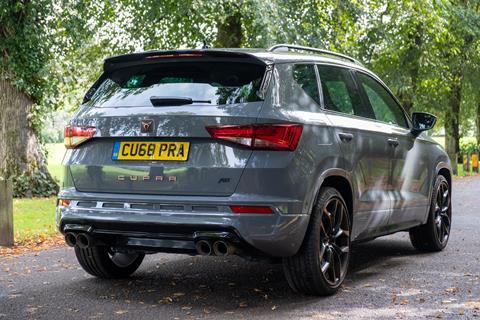
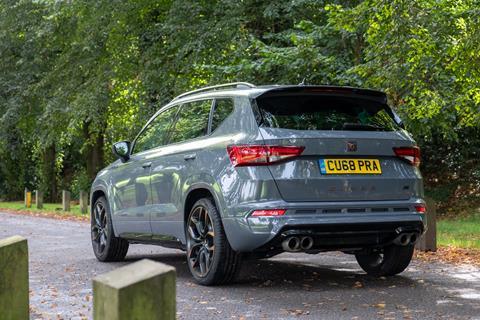

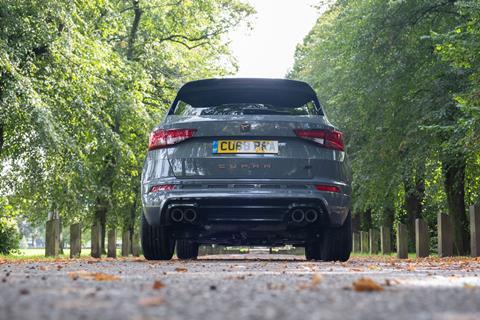

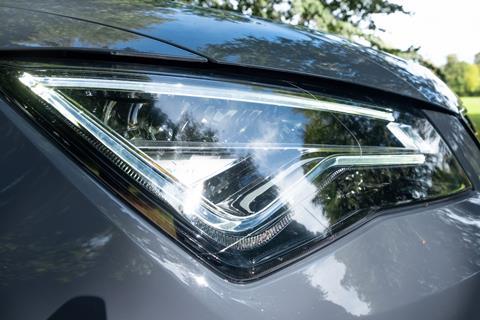

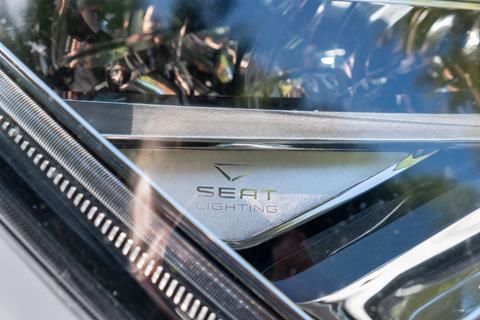
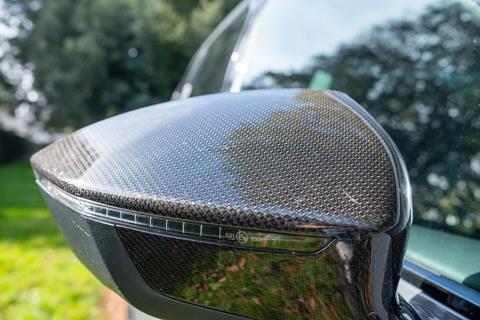
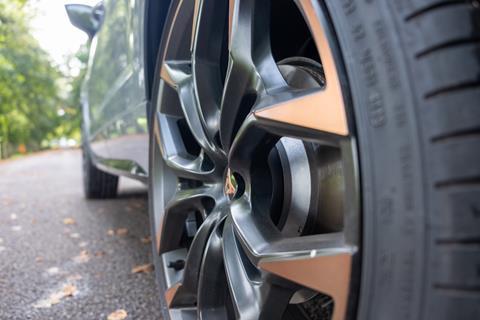
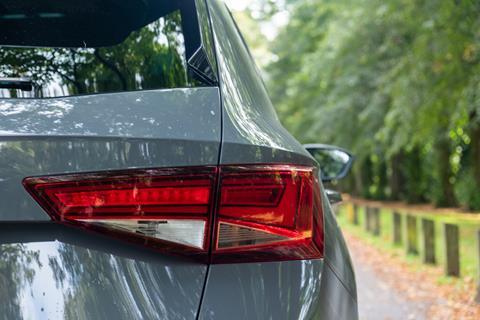
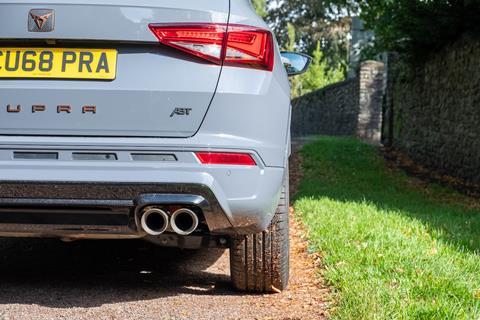
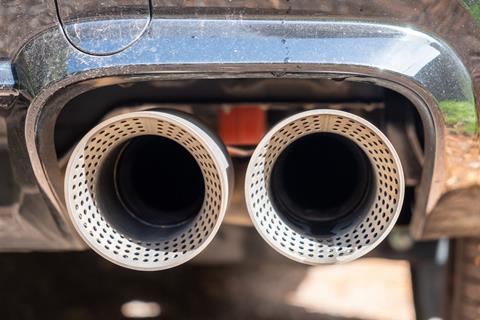
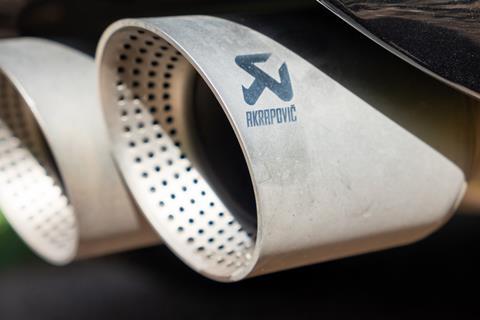
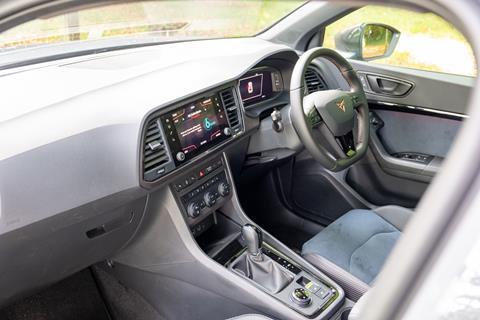

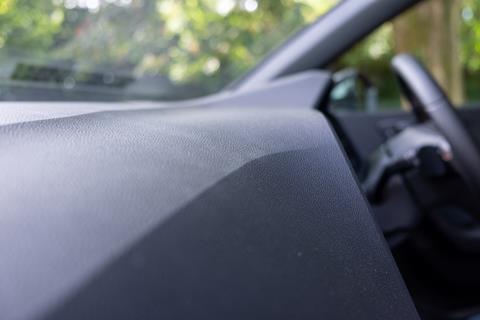
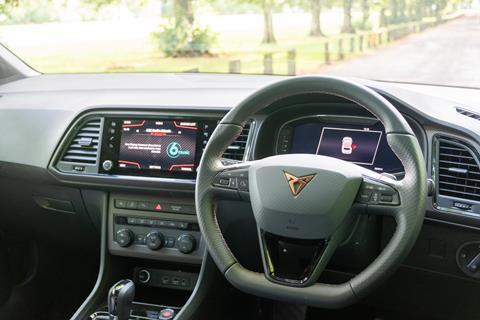
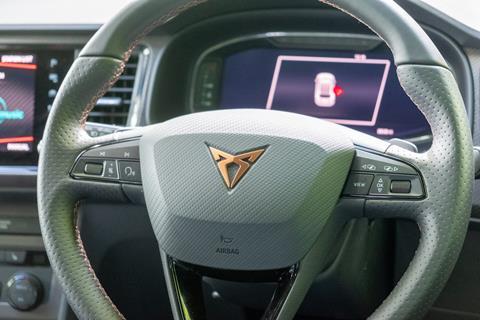
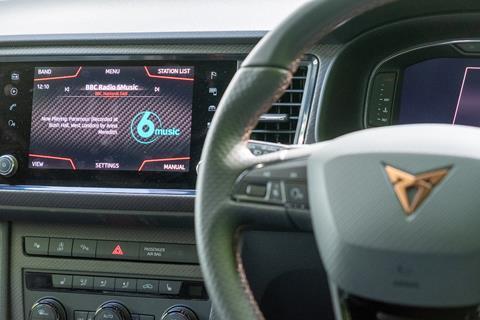

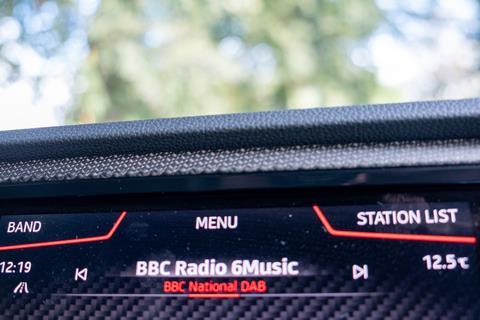
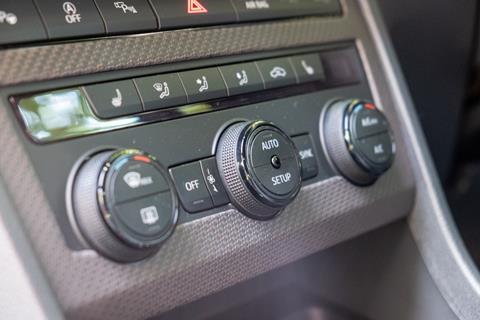
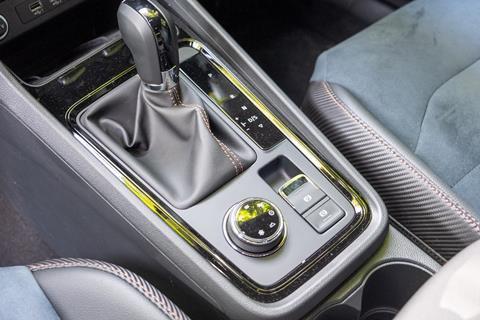
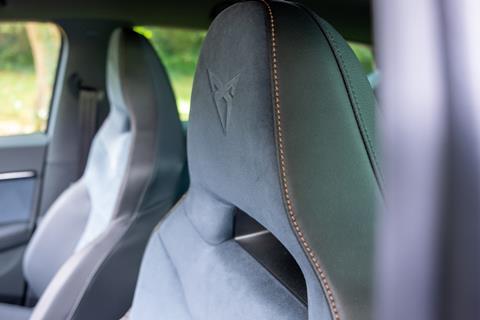
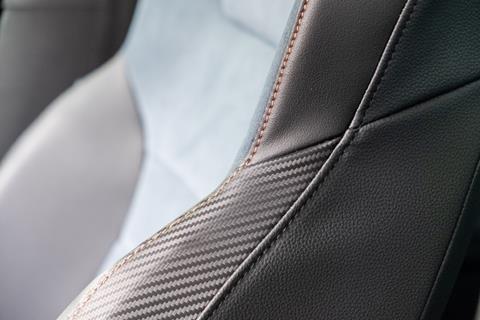
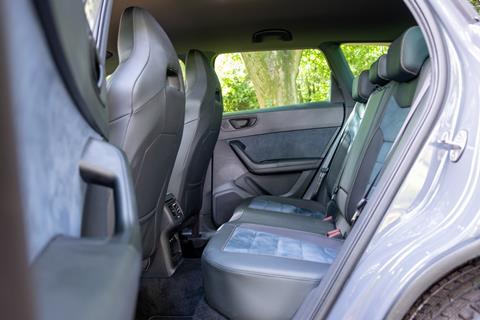
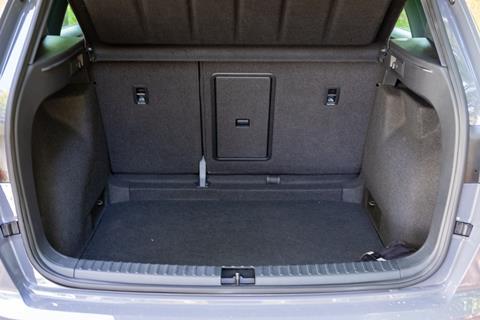
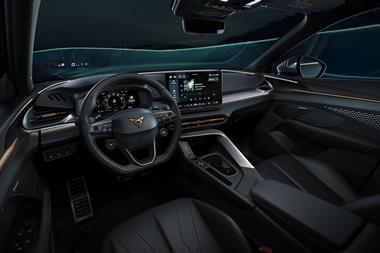
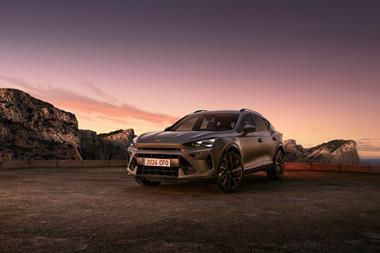
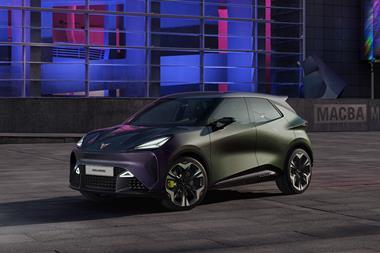
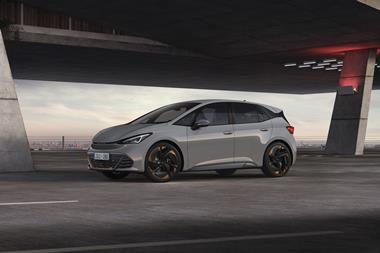





No comments yet